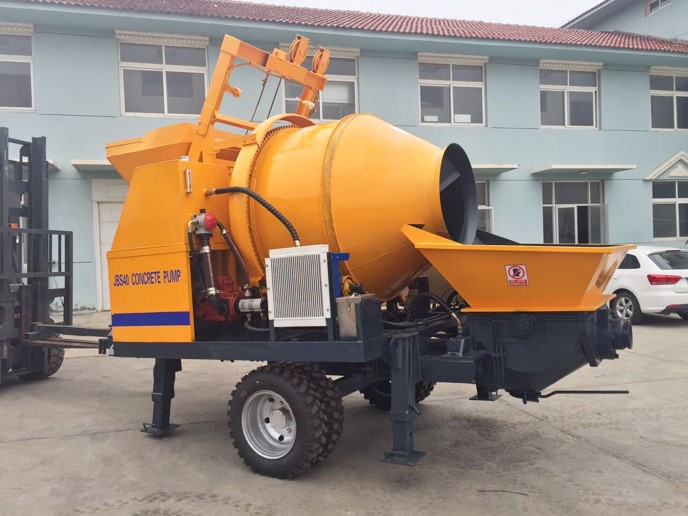Construction projects need a steady supply of concrete, and without it, the project will be difficult to finish. These projects are frequently confronted with the problem of physically handling a big quantity of concrete. To address this issue, many types of concrete pumps were designed for use on building sites. This device has simplified the handling and placement of enormous amounts of concrete. Choosing the appropriate concrete pumps that are inexpensive, efficient, and precisely tailored for a unique building project is critical during construction projects. This article explains briefly the types of concrete pumps. Follow us at Linquip.
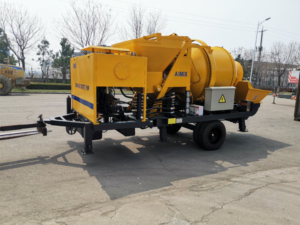
⇒ View a List of Pumps for Sale and Their Suppliers ⇐
What are Concrete Pumps?
Concrete pumps are powered by a motor or diesel engine and are used extensively in moving liquid concrete to the construction site by pumping it. They are presently the most used way of conveying liquid concrete and are a regular sight on construction sites. The advent of the concrete pump has boosted the efficiency of construction projects, particularly high-rise structures. They come in a variety of sizes and shapes. They are the most effective method of laying concrete for a building project.
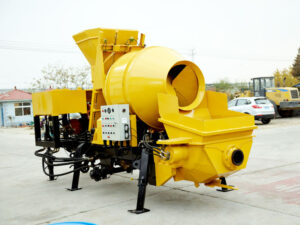
What are the types of Concrete pumps?
Different types of concrete pumps have been developed depending on pumping pressure, ease of operation, and method advancement. Concrete pumps are classified mostly as follows:
Five types of concrete pumps are:
- Boom or Truck mounted pumps
- Trailer, line, or stationary pumps
- Specialized usage pumps
- Direct-Acting Concrete Pumps
- Squeeze Concrete Pumps
Let’s briefly look at these three.
Boom or Truck Mounted Pumps
Because of their larger size, these types of concrete pumps are best suited for lengthy highways and highway projects. These types of pumps are mounted on a truck and employ a remote-controlled articulating robotic arm, commonly known as a “boom”, to precisely distribute concrete at the building site. A truck-mounted boom pump is another name for them. These pumps also include a hydraulic arm that can maneuver the pipeline containing the concrete, allowing it to reach along, up and down, and even around tight areas and obstructions.
These types of concrete pumps are thus highly recommended for concreting projects where there may be limited space at the premises or simply many impediments in the path that the concrete must be transported around, between, or beyond. They also save a lot of work because of their multi-purpose robotic arm.
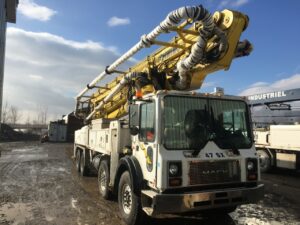
Trailer, line, or stationary pumps
In comparison with boom pumps, stationary pumps are less maneuverable. A concrete pump is installed on a trailer or linked to a vehicle, but it includes flexible rubber or steel hoses that connect to the machine’s output. These hoses may be connected to other extension hoses to reach any location where concrete must be stored although they have less mobility than a boom pump. Trailer pumps pump concrete at a slower pace than boom pumps and are thus utilized in applications requiring lesser volume pumping, such as swimming pools, preparing ground slabs and sidewalks.
These types of concrete pumps have three types of pumping systems, which differ depending on the brand and features of the equipment. They are:
- Concrete Pump with “Rock Valve”: Typically used while working with huge stones or aggregate.
- Concrete Pump System with Balls: The units are made up of two chambers separated by steel balls, in which concrete cylinders absorb pumped material and allow it to pass under pressure via the outlet.
- Concrete Pump with “S Valve”: Concrete is pumped through a single valve on these devices, which are characterized by high-pressure pumping.
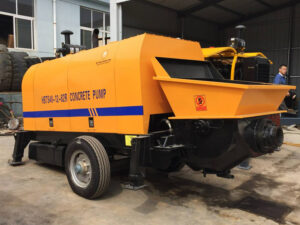
Specialized usage pumps
One of the several types of concrete pumps that are easily accessible are specialized usage pumps. Specialized usage pumps can be particularly developed for use in certain types of construction projects, such as mine or tunnel construction. These pumps are rarely utilized since they are costly and operate via a separate mechanism; they are either skid-mounted or rail-mounted.
Direct-Acting Concrete Pumps
These types of concrete pumps are direct-acting, horizontal piston pumps with semi-rotary valves.
The concrete is poured into the pump by gravity and partially by suction, thanks to the reciprocating action of the horizontally moving piston. The semi-rotary valves alternately open and close, generating a suction pressure of 0.08 N/mm2 in the pumping cylinder. Concrete must flow easily through the suction pipe’s whole cross-section, and possible bottlenecks caused by big aggregates must be avoided. The diameter of the suction pipe must be three times the maximum size of the aggregate in the concrete to be pumped, and the overall size is controlled by the breadth of the suction pipe. During the suction stroke, the intake valve opens, and concrete is admitted into the pumping cylinder while the output valve stays closed. The exit valve opens and the intake valve shuts during the delivery stroke, and then concrete is pumped into the delivery pipeline. The concrete travels in spurts, and the delivery pipe remains full.
Squeeze Concrete Pumps:
Squeeze concrete pumps are portable punching pumps that are compact in size. Under a vacuum pressure of about 0.08 N / mm2, the rotating blades feed the concrete from the collecting hopper into a flexible conduit linked to the pumping chamber. The vacuum ensures that the pipeline retains its cylindrical shape while being compressed by revolving rollers, allowing for a continuous flow of concrete. These two revolving rollers mounted on the worldwide drive pressure the concrete, forcing it into the delivery pipe.
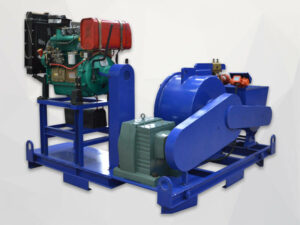
Summary
Concrete pumps are instruments used to transport liquid concrete from the source of the concrete to the casting location. There are different types of concrete pumps available. Boom concrete pump is a machine that is used to pump liquid concrete. It is known as a boom concrete pump since it employs a boom to properly retain the concrete. Specialized usage pumps are other types of concrete pumps that are a more expensive choice. These pumps are designed for usage in particular environments such as mines and tunnels. Stationary concrete pumps, as other types of concrete pumps, are distinguished by their ability to pour concrete at a slower rate than other types of pumps. As a result, a lower amount of concrete is required for a building project.
When renting a concrete pump for a project on your property, there are many types of concrete pumps. We realize how perplexing it may be to choose which pump is most suited to your project, so we’ve put together this guide to help you understand the different types of concrete pumps.
Thank you for taking the time to read this month’s blog. If you have any questions, please contact us at Linquip for more information. Do not forget to register first.
Buy Equipment or Ask for a Service
By using Linquip RFQ Service, you can expect to receive quotations from various suppliers across multiple industries and regions.
Click Here to Request a Quotation From Suppliers and Service Providers
Read More on Linquip
- Pump: Working Principles, Function & Diagram
- Different Types of Pumps: Ultimate Guide in 2022
- Types of Fire Hydrant Systems
- Types of Piston Pumps
- 3 Types of Oil Pumps + Working Principle & PDF
- 5 Main Types of Fuel Pump & How They Works?
- 3 Types of Heat Pump + Working Principle ( Clear Guide)
- 6 Type of Sump Pump and Which Are Better to Buy?
- Types of Pump Casings (In Centrifugal Pumps & Others) + Pros & Cons
- 13 Parts of Concrete Pump with Name & PDF
- 9 Different Types of Rotary Pumps + PDF
- 3 Types of Positive Displacement Pump + Name & PDF
- 5 Types of Vacuum Pump and Applications + PDF
- 3 Types of Well Pumps + Applications
- 6 Main Types of Dynamic Pumps: Examples + PDF
- 5 Main Types of Fuel Pump & How They Works?
- 3 Types of Vane Pumps: Working Principles & Application
- Types of Water Pumps and Their Principles
- Types of Centrifugal Pumps: All Classification & Working Principles
- Types of Submersible Pumps: All Classification With Details

